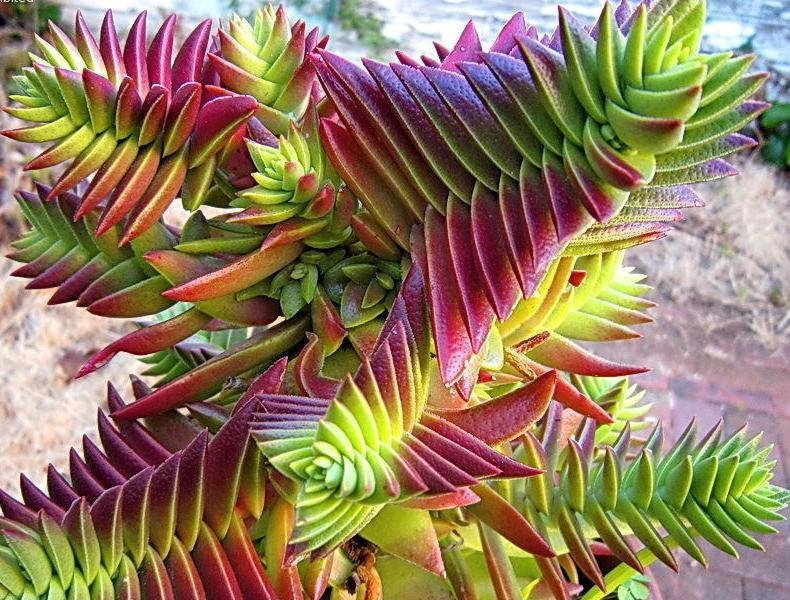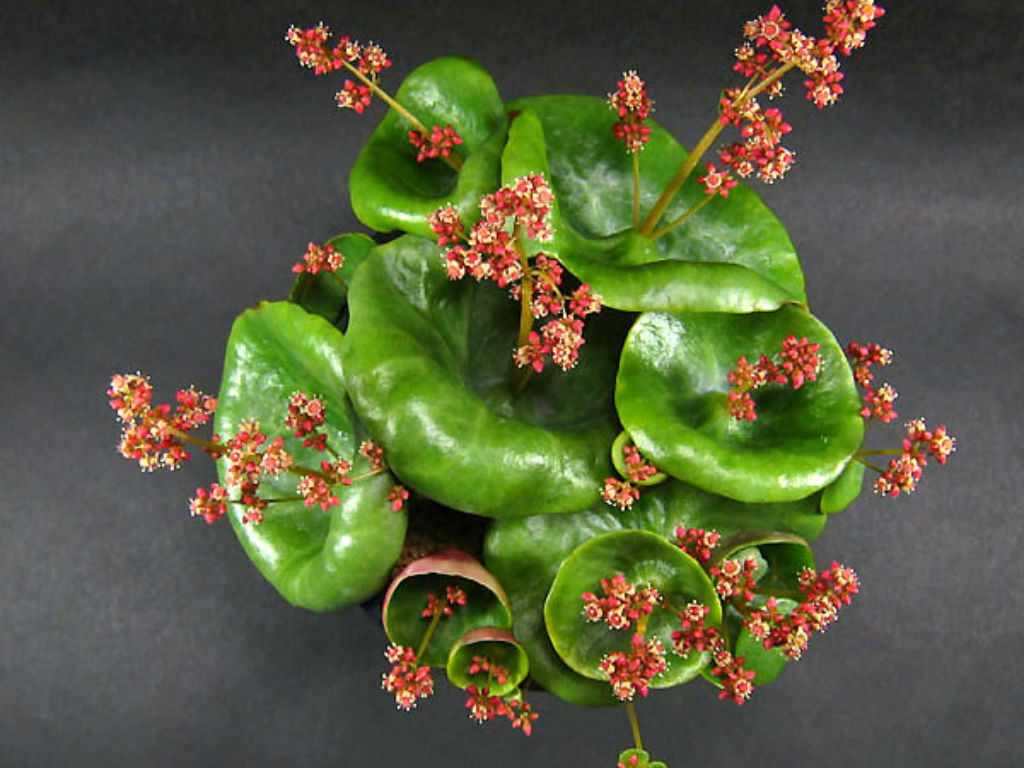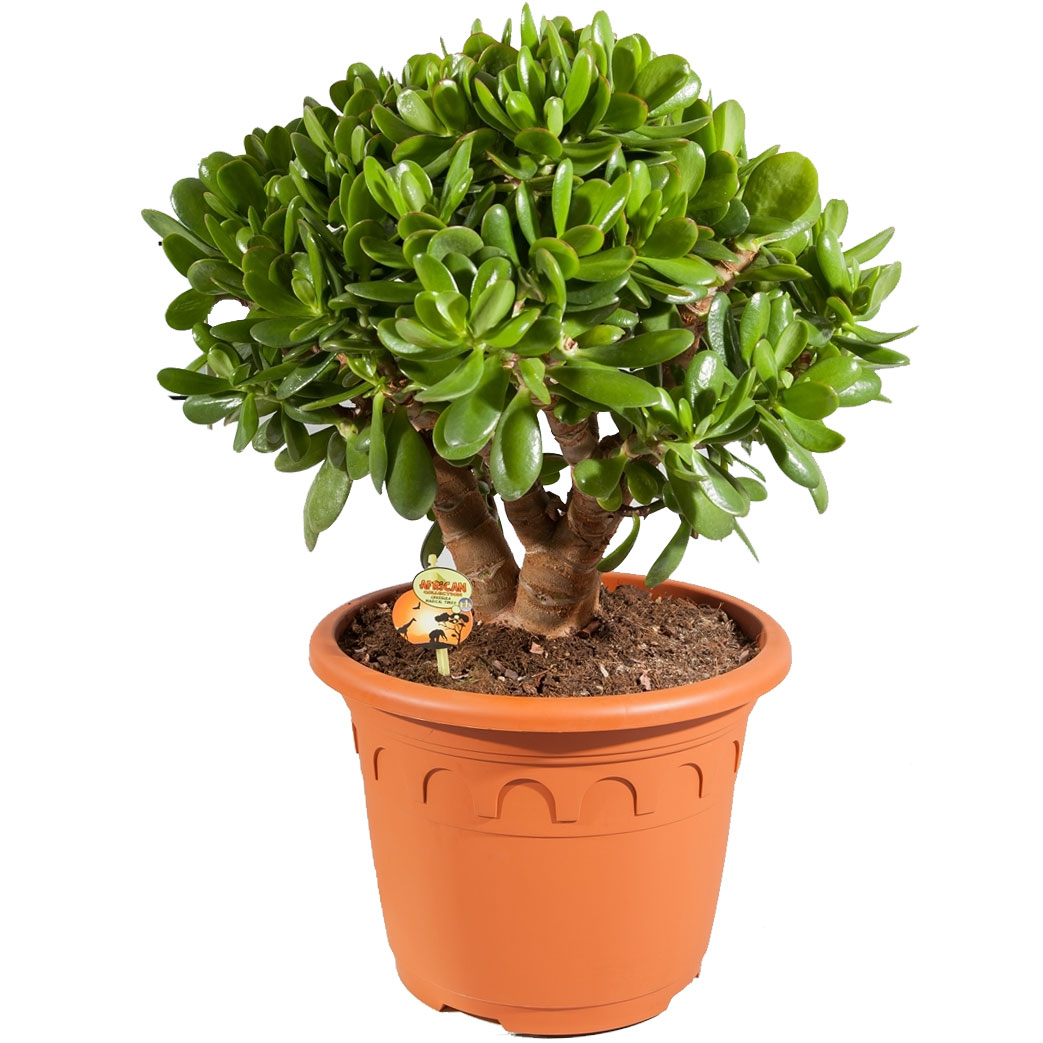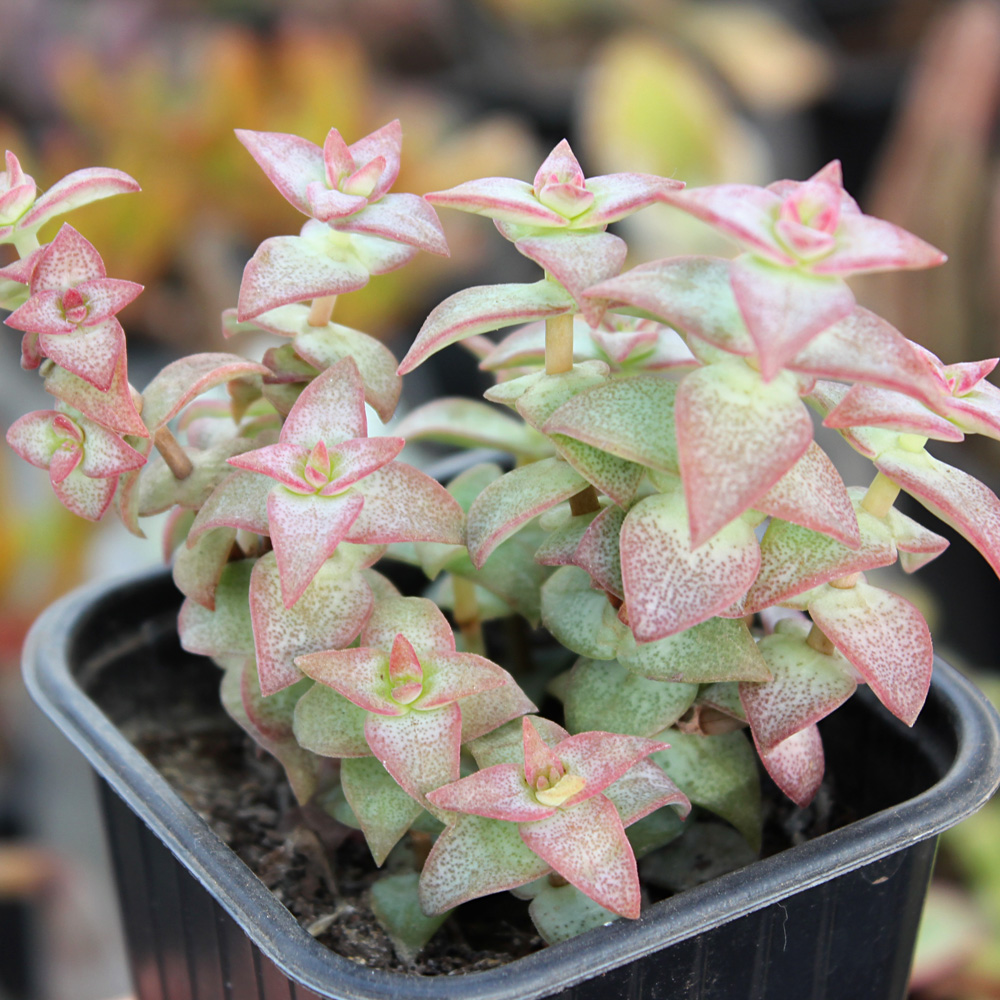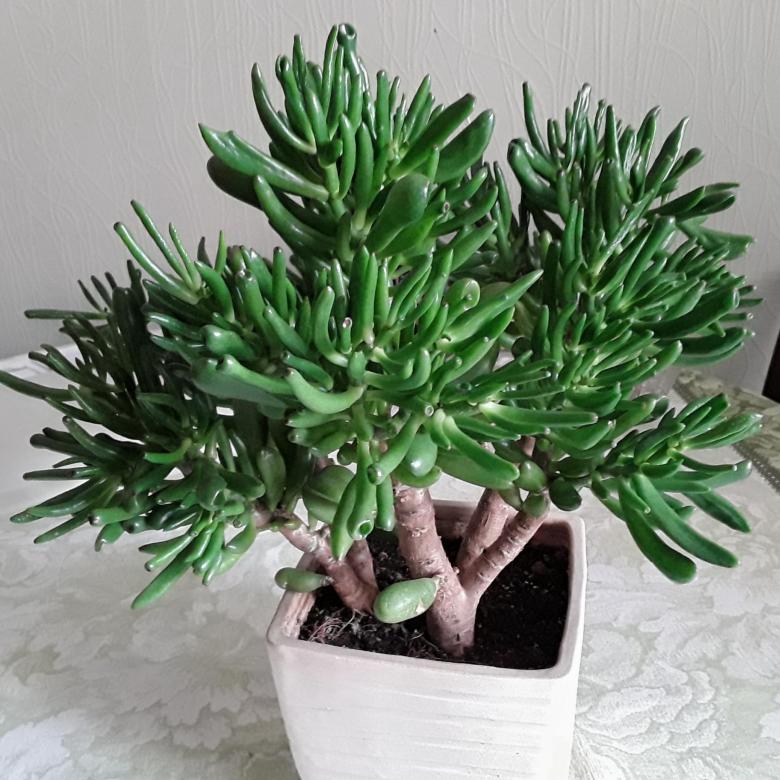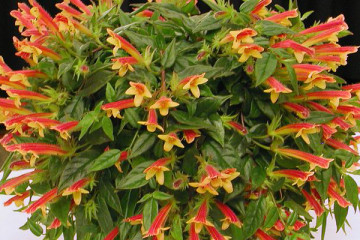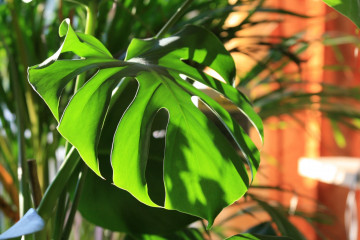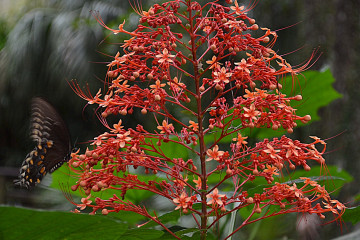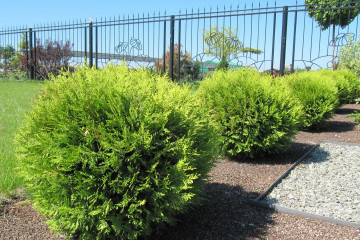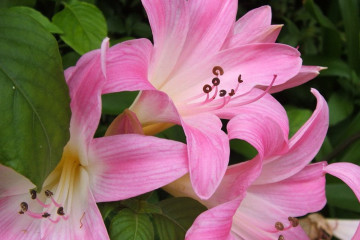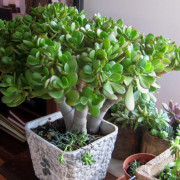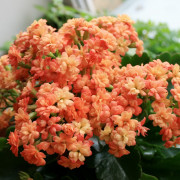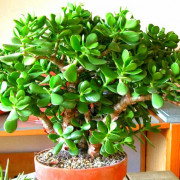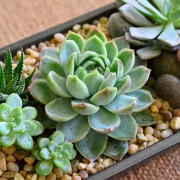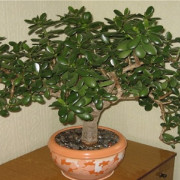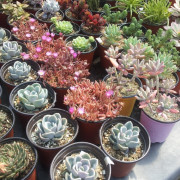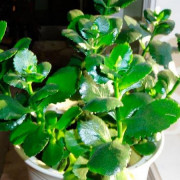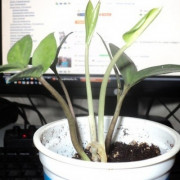Crassula - species and varieties, Lycra and Perforata
Content:
Everyone knows the money tree, but, as it is scientifically called, not everyone knows. A widespread plant is called crassula, or the house flower bastard. This is an original Crassula plant, the species of which are so numerous, the forms are so varied and bizarre, the color palette is amazing that an assumption arises: these are not earthly flowers, but aliens from other planets.
The entertaining world of succulents attracts amateur florists, landscape designers and professional florists. A dolphin-like succulent in the form of rabbits, rosebuds - everyone will find suitable pets for growing at home or creating highly artistic landscape compositions. Even the mere contemplation of these original plants brings tranquility and serenity to our ultra-fast time.
general description
The genus Crassula has more than 350 species in nature, differing in a variety of shapes and colors. Many of them belong to the leaf succulents of the Tolstyankovye family. Succulents (succulentus - succulent) are plants that can control their metabolic processes and accumulate water in leaves and stems to protect themselves from the variability of weather conditions. The dense glossy surface of the sheet restrains the evaporation of moisture during drought.
They chose both tropical and the driest places of the planet Earth as their habitat. They can be found in the south of the Arabian Peninsula, in Madagascar, they grow in huge numbers in South Africa. The more extreme the living conditions, the more original their form, the more fantastic the color and the more exotic the flower.
"Crassula" is Latin for "thick", which corresponds to the appearance: its leaves are fleshy and thick. There are annual and perennial species, herbaceous and tree-like forms.
All types are conventionally divided into two groups:
- Stem;
- Leafy.
In indoor floriculture, the most common types are divided into 3 groups:
- Tree-like;
- Groundcover (creeping);
- Columnar (spike-shaped).
The tree-like crassula looks like a tree with a trunk and branches. The shape of the leaves, reminiscent of a coin, gave rise to calling the fat woman with similar words in different countries:
- "Coin tree";
- "Money Tree";
- "Silver Tree";
- "Tree of Happiness".
It is believed to bring prosperity, success, wealth and good luck in financial affairs.
This group brings together the most popular types of fat women, which they have become, thanks to their original appearance and their unpretentiousness. The arrangement of slightly dissected leaves on the stem is opposite. Flowers of small different shades, collected in inflorescences, differing in shape, the number of petals and stamens in the flower is the same. The triangular shape of the leaves differs from the money tree, the bushy bushy Spring Time.
Miniature trees with a magnificent crown and a thick stem, which are easy to care for, will be a worthy decoration for any interior.
A rare species of treelike Crassula - Crassula umbella (or umbrella), found in a very limited territory of the Republic of South Africa, is even listed in the Red Book of the state. This is a small succulent plant with stems up to 25 cm high.The leaves are obovate with one or two pairs of adjacent leaves merge to form an umbrella. Their color ranges from yellowish-green to red. In nature, it sheds leaves during a summer drought. Flowering is observed in the winter-spring period.
Types of flower bastard
Crassula umbella (or umbrella)
The ground cover (creeping) crassula is a herb with a high growth rate, which covers the surrounding area with a carpet in a short time. It is very different from others, resembling sea coral. The leaves form multifaceted pagons with raised tops; their color depends on the growing conditions. It is very popular in home floriculture.
Ground cover includes Fluffy bastard, a small shrub with low creeping tetrahedral shoots. Very small leaves are connected in four even rows, tightly nestling one against the other. They develop a reddish tint in bright light.
Spicate (columnar or columnar)
Crassulae got their name from their original structure. Their erect stems most often have few or no branches. The leaves, which have grown together in pairs at the base, cover the stem so that it seems as if they are strung on it. The small size, the ability to form dense groups and the peculiar appearance contributed to the widespread popularity of this group among flower growers.
Crassula broadleaf (rock) - a representative of this group, is distinguished by its great decorativeness. She has fleshy branched creeping or erect shoots, they grow up to 60 cm.The leaves are thick oval with a sharp end, the length of the leaf plate is 1-2.5 cm, the width is up to 2 cm.The color of the leaf is green with a blue tint and reddish-red stripes at the top.
Crassula flowers formed very rarely at home are white, light pink, yellow and red.
All crassules differ from one another in appearance, but remain constant:
- Opposite arrangement of leaves.
- Small dissection of the leaf plates.
- Small size of flowers, collected in paniculate, umbellate or racemose inflorescences.
- Ease of plant propagation.
Crassula ovate or Crassula Ovata
Crassula Ovata (crassula ovata) - a representative of the tree-like bastard, is the most common variety of this semi-herbaceous plant among amateur flower growers due to its unpretentiousness and shade tolerance. It can be placed in lobbies, poorly lit hallways, on the sills of shaded windows.
Crassula Ovata is considered the main plant in the family; today there are more than 300 species and varieties of this succulent.
Like many of them, Crassula Owata is a native of South Africa. In nature, it reaches a height of 2.5 m. Indoors it grows up to 60-100 cm. The woody erect stem is strongly branched, acquires a brownish color with age. Shoots are juicy, gray-green in color, old branches have brownish stripes of bark.
Opposite leaves, shiny, flat, on a short petiole, retain a lot of moisture. The leaf plate is fleshy, obovate, with sharp, sometimes reddish edges and nectar glands located in them, its width is 2-4 cm, length is 3-9 cm. The underside of the leaf is reddish.
Flowering occurs in autumn and winter. Small white-pink flowers in the form of stars with a sweet aroma.
This fat woman can withstand temperatures of 10 ° C and even short-term weak frosts.
Crassula Mix
Crassula Mix is another tree-like representative of the Tolstyankovye family, which easily takes root and is often found in the collections of florists and in many homes of amateur flower growers.
A plant with a massive trunk and many branches, on which are juicy leaves in the form of an oval of medium size. The leaf plate is dark green along the edge with a red stripe. Its width is up to 2 cm, its length is up to 4 cm.
If this succulent is not cut off, the crown becomes bushy. By pinching the shoots, they achieve the shape of a tree.
Crassula lymphoid
The lymphatic fat woman belongs to the ground cover species of Crassula. Unlike tree-like bastards, it does not have a tree-like trunk and thick rounded leaves. The plant outwardly resembles a lycophone, which gave the name - lyciform crassula. Several creeping fleshy shoots have a tetrahedral shape, their tops stretch upward.
Leaves are thin, oval, with pointed ends, close to the trunk, arranged in four rows. The more intense the sunlight, the more reddish the color appears. Feels good in the shade too. Flowers in the form of small white stars have an inconspicuous appearance.
This ampelous plant will look great in hanging vases and pots.
It multiplies very quickly, throwing out many shoots and filling the allotted space. It is planted as a ground cover plant on the lawn, which serves as a backdrop for flowering bright plants. It grows and feels good next to all representatives of the flora.
Crassula Perforata
Crassula Perforata is a representative of spike-shaped crassulas. An unusual look is given to it by paired diamond-shaped leaves, fused at the base and encircling a rigid weakly branching stem, reaching 20 cm in height. In girth, the stem with leaves does not exceed 3 cm. Light green with a bluish, silvery or olive bloom, sometimes with spots of a red hue, the leaves are arranged crosswise, their length is up to 2 cm.
Blooms usually in winter. Many small flowers, collected in dense inflorescences, often white, sometimes pink and red, are located in the upper part of the shoot. Does not require excessive care, propagates by cuttings from stems. Suitable for growing as an ampelous plant.
Crassulae The Hobbit and Gollum owe their names to the heroes of the epic novel by John Ronald Ruel Tolkien "The Lord of the Rings". They were bred by American breeders after the publication of this book in the 50s of the twentieth century. The progenitors of the hybrids obtained by crossing were Crassula Ovata and Milky. Both hybrids are held in high esteem by room designers due to the originality of the crown and unpretentious care.
Crassula The Hobbit
The Hobbit Fat Woman is very different from its progenitors in the shape of milk leaves, which resemble a funnel in appearance: most of the leaves are turned outward and have an accrete part from the base to the middle. Its trunks are strong, more branched than those of the mother plant. It is compact - up to 60 cm tall.
When growing in a brightly lit area, the leaves acquire a yellow tint, and a reddish-brown border appears. They attract with their decorativeness and are used to create bonsai. There are several forms of variegated (variegated) Hobbit hybrids.
Crassula Gollum
Crassula Gollum is very similar to the Hobbit, but differs in slower growth and rolled leaves with a bell at the upper end with a crimson rim. The size of the tree (up to 50 cm) and the nature of growth coincide with the Ovate Crassula. The formation of a fancy crown occurs independently.
Succulents are a real gift for growers who do not have enough free time for constant care and special care. It is for these reasons that they gained wide popularity and became very fashionable. The many-sided Crassula varieties and varieties of which amaze the imagination with a variety of shapes, sizes and colors have become widespread among florists and amateur florists. Caring for a fat woman at home is extremely simple and affordable even for children.
In addition to decorative appeal, the plant has a number of useful qualities. The medicinal value of Crassula is that it has anti-inflammatory, regenerating, antibacterial and antifungal properties.
The beneficial properties of the bastard are widely used in folk medicine. Crassula leaves are used to get rid of calluses, in the treatment of various skin diseases, problems with the gastrointestinal tract and throat ailments.
After reviewing the information about an unpretentious plant, making sure of the ease of growing, an experienced and novice florist will wish to acquire an original pet.
